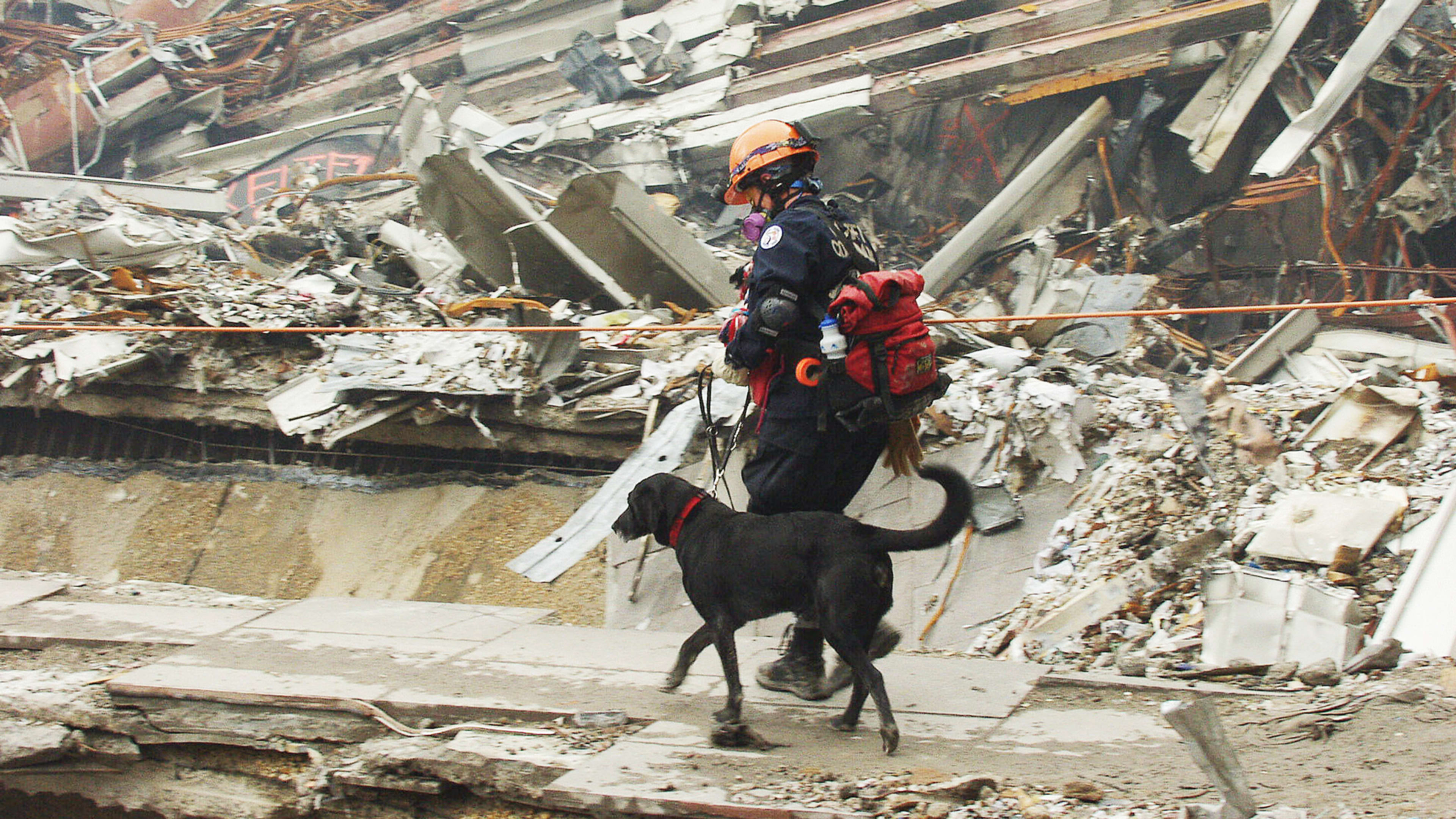What became of the fluffy, dusty search-and-rescue dogs of 9/11, seen sniffing smoldering mounds of rubble? Turns out that they did not share the disease–laden fates of many 9/11 rescue workers.
In the weeks following attacks of September 11, 2001, veterinarians at the University of Pennsylvania launched an in-depth study tracking the health, longevity, and causes of death of 95 search-and-rescue dogs deployed at the World Trade Center, Pentagon, and a debris-sorting site. The dogs’ health was compared to that of 55 search-and-rescue dogs who had not worked on 9/11. The expansive study included annual medical exams (including chest x-rays and blood work), as well as postmortem organ tissue samples of 63 dogs.
The results surprised the researchers. “Honestly, this was not what we expected,” says co-author Cynthia Otto, who directs the Working Dog Center at the University of Pennsylvania School of Veterinary Medicine. Otto herself worked at Ground Zero, and had heard unsubstantiated rumors about the deaths of Oklahoma City bombing search-and-rescue dogs. “We anticipated that the dogs would be the canary in the coal mine for the human first responders since dogs age faster than humans and didn’t have any of the protective equipment.”
Nope, didn’t happen. The 9/11 dogs showed no differences in causes of death compared to the unexposed dogs, and in fact outlived them by a hair, averaging 12.8 years versus 12.7. Most died of typical age-related conditions like arthritis and cancer, and on average outlived the average lifespans of their breeds.
The 9/11 dogs did show much more particulate materials in their lungs, though only 5% of the dogs in the study had respiratory disease. “Dogs have a really good filtering system,” says Otto. “Their lungs are different—they don’t get asthma, for example.”
The study was published in the Journal of the American Veterinary Medical Association, and suggests that working dogs likely face minimal long-term health risk from deployments to building fires and crash sites.
Recognize your brand’s excellence by applying to this year’s Brands That Matter Awards before the early-rate deadline, May 3.
